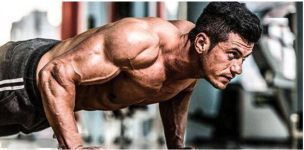- Messages
- 649
- Reaction score
- 190
- Points
- 43
Some of the classic bodybuilding training theories are as follows:
- Weider Training Principles: Proposed by Joe Weider, it has an extremely profound impact on modern bodybuilding training.
- Progressive Overload Principle: As training progresses, the body will gradually adapt to the original training load. In order to continuously stimulate muscle growth, it is necessary to continuously increase the training weight, difficulty, or number of repetitions. For example, increase the weight of barbells or dumbbells at regular intervals, or increase the number of sets and repetitions per set. This can constantly challenge the muscles and promote adaptive growth of muscles.
- Multiple Sets Training Principle: Emphasize performing multiple sets of training for each part of the muscle to fully stimulate muscle fibers. Generally, each exercise should be performed in 3-4 sets or even more. For example, when training chest muscles, perform 3-4 sets of bench press training, with 8-12 repetitions per set. This can more comprehensively and deeply stimulate different parts of the chest muscles and promote the overall development of the chest muscles.
- Isolation Training Principle: During training, isolate the target muscle as much as possible and reduce the participation of other muscles to focus on stimulating the target muscle. For example, when performing dumbbell curls, keep the body stable and avoid using body sway or the strength of other parts to complete the movement. Focus attention and strength on the biceps brachii to better stimulate the growth of the biceps brachii.
- Differentiated Training Theory: Separate different parts of the body for training and focus on different muscle groups on different training days. Common differentiated training plans include:
- Chest, shoulders, back, legs, and arms differentiation: For example, train chest and triceps on the first day, shoulders and trapezius on the second day, back and biceps on the third day, legs on the fourth day, and forearm muscles of the arms on the fifth day. This kind of differentiation allows each muscle group to get sufficient rest and recovery, and at the same time, it can be trained more targeted to improve training results.
- Upper and lower limb differentiation: Divide the body into upper and lower limbs and train them on different training days. For example, train the upper limbs on the first day, including muscle groups such as chest, shoulders, back, and arms; train the lower limbs on the second day, including muscle groups such as thighs, calves, and buttocks. This differentiation method is suitable for people who are relatively short on time but still want to train the body comprehensively.
- Periodization Training Theory: Divide the training process into different periods, and each period has specific training goals and focuses. Generally, it includes the following stages:
- Foundation Period: Also known as the preparation period, the main goal is to improve the basic physical fitness and muscle strength of the body and lay the foundation for subsequent training. The training intensity at this stage is relatively low, and the training volume gradually increases. Basic training movements and methods are adopted.
- Muscle Building Period: After the foundation period, enter the muscle building period. At this time, the focus is on increasing the volume and quality of muscles. The training intensity and volume are both high. Adopt a training method of heavy weight and low repetitions. At the same time, ensure sufficient nutrition and rest to promote muscle growth.
- Intensification Period: After the muscle building period, enter the intensification period. The main goal is to improve muscle strength and explosiveness. The training intensity is further increased. Adopt a training method of high intensity, low repetitions, and short rest time. At the same time, combine some explosive training movements such as squat jumps and bench press throws.
- Fat Loss Period: After a period of muscle building training, the body fat percentage may increase. At this time, it is necessary to enter the fat loss period to reduce body fat and show the lines and contours of muscles. At this stage, aerobic exercise is the main training method, such as running, swimming, and cycling. At the same time, control diet and reduce calorie intake.
- Muscle Contraction Theory: The contraction mode of muscles has an important influence on training results. The main muscle contraction methods include:
- Concentric Contraction: When the muscle contracts, its length shortens and generates force to move the object in the direction of muscle contraction. For example, when performing dumbbell curls, when raising the dumbbell from bottom to top, the biceps brachii is doing concentric contraction. This contraction method can generate greater force and has a good effect on improving muscle strength and explosiveness.
- Eccentric Contraction: Opposite to concentric contraction, the muscle is lengthened when it contracts. When lowering the dumbbell, the biceps brachii is doing eccentric contraction. Although eccentric contraction generates less force, it can cause greater stimulation to the muscles and promote muscle growth and recovery. It has an important role in increasing muscle volume and quality.
- Isometric Contraction: When the muscle contracts, its length remains unchanged, and the generated force is equal to the external resistance. For example, when performing planks, the abdominal and core muscles are doing isometric contraction. This contraction method can improve muscle endurance and stability and has a good effect on enhancing the core strength of the body and maintaining the correct posture.


